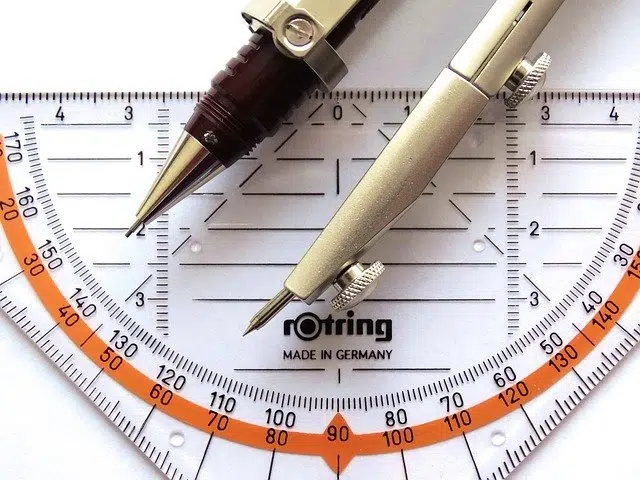
An obtuse triangle is one that has one obtuse angle.
In the field of geometry , plane figures that are delimited by a certain number of segments are called polygons . If the polygon is made up of three segments (called sides), the figure is a triangle .
Depending on its specific characteristics, a triangle can be classified in different ways. The obtuse angle triangle is one that has an obtuse angle : that is, it measures more than 90° . Of the three interior angles of the obtuse triangle, therefore, one is obtuse, while the other two are acute (measuring less than 90°).
Characteristics of the obtuse triangle
Obtuse triangles are also oblique triangles since none of their interior angles are right. Acute triangles , which have three acute angles, fall into this same classification. If the triangle has a right angle , however, it is classified as a right triangle (and is not obtuse, acute or oblique).
It is important to keep in mind that obtuse triangles can also be included in other sets depending on the characteristics of their sides. The obtuse angle triangle that has two sides that measure the same and a third side that is different is an isosceles triangle . If the obtuse angle triangle has three different sides, all with different measurements, it is a scalene triangle .
As you can see, the same triangle can be classified in more than one way, depending on whether it is centered on its angles or on its sides . A triangle, in this way, can also be isosceles or scalene in addition to obtuseangle and obliqueangle, since the first two classifications depend on the sides and the other two, on the angles.

Triangles can be classified in different ways.
A simple looking figure
Triangles are apparently very simple figures, the least complex of all if you like, but they hide a large number of concepts and applications that are more than useful for solving endless mathematical and physical problems. First of all, we should not think of the triangle as a body that only works if we know all its sides and angles: many times, it is through thinking in this way and taking advantage of some of the numerous equations associated with it that we can find a solution. to a problem that hardly seems to be related to geometry.
That said, let's consider that to find an obtuse triangle there are at least two paths, one at each end: draw it; deducing its presence through the equations that relate its sides to its angles. The first case is not exactly challenging, or at least not for science: we take a pencil, draw three lines connected to each other and, that's it. On the other hand, noticing that we are facing a triangle when its existence is not evident can get us out of more than one dead end.
The obtuse triangle in a specific situation
Let's consider a situation in which we need to know the relative position that a point would have if it passed from one plane to another, parallel to the first; more specifically, the position that an object from the three-dimensional universe would have if it moved to the two-dimensional one from which it is observed. This may be necessary when developing a video game in which you need to use a two-dimensional graphic as a sight, always on the screen, and make it react every time it passes "over" certain three-dimensional objects, since the screen is measured in pixels. , while the 3d universe uses arbitrary units .
Well, given that the camera that films the scene has a certain field of view (a vertical angle and a horizontal angle, which form an imaginary pyramid, outside of which no object is shown), we can use these angles together with the distance that exists between the camera and each three-dimensional object (which we will convert into the largest leg of a triangle) to solve the problem. Before continuing, we must understand that these fields of vision draw two triangles of different kinds (if an angle is greater than 90°, we will be faced with an obtuse-angled triangle), but when cutting them in two, we will obtain four straight ones.
Having done this, we simply need to apply the relevant equations to find out the remaining leg (once for the vertical angle and once for the horizontal angle, which now measure half), and double them to find out the dimensions of the space in which the object is located. ; Finally, we transfer its position to the screen by relating these dimensions to the resolution in pixels.
